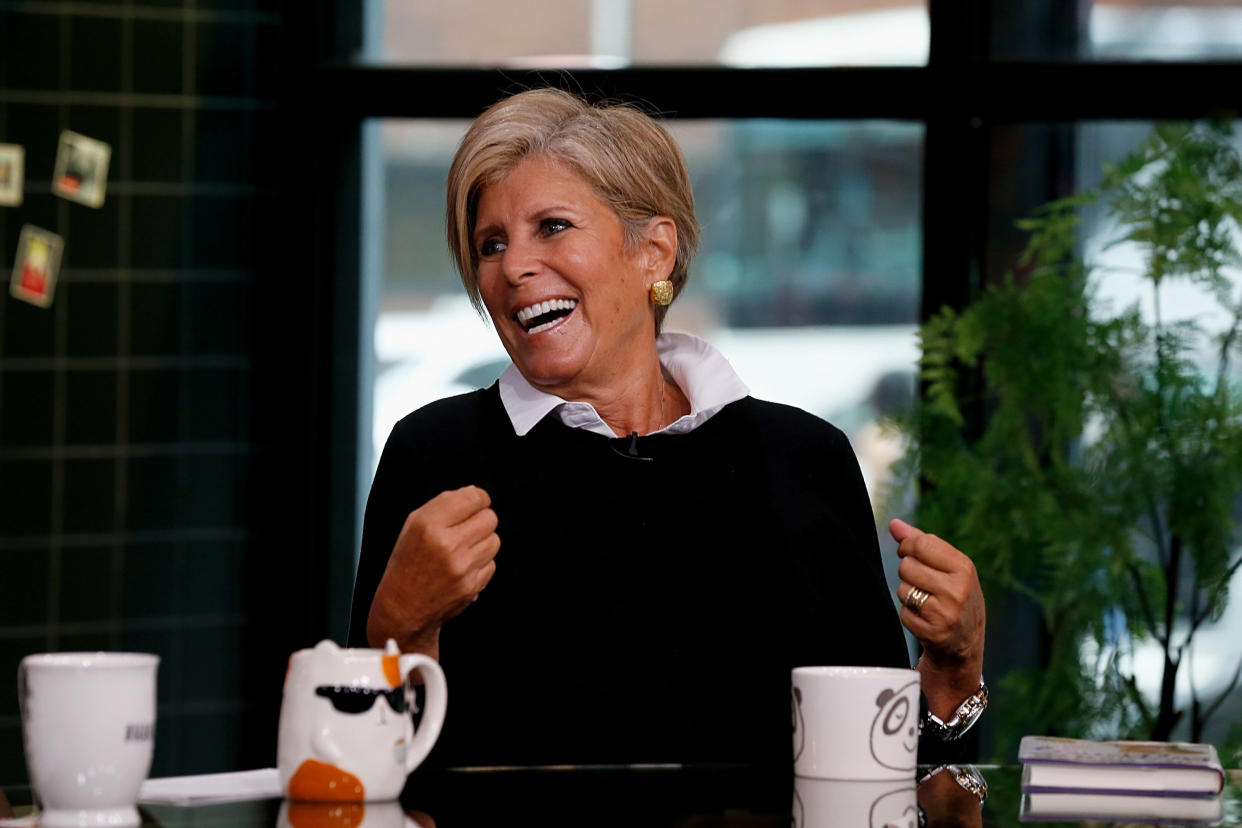Here's How Much You Really Need To Save For Early Retirement

Lazy mornings. Sandy beaches. The joyful noise of grandchildren playing.
The concept of retirement conjures different images for different people. And it can be really hard to get there. But one thing’s for sure: We all look forward to the day when we can quit work for good ― the sooner, the better.
For some, though, early retirement is more than a fantasy. It’s a goal they’re working toward aggressively. But how realistic is it? Here’s how much the typical person needs to save in order to retire early.
Getting FIREd up about early retirement
The financial independence/retire early movement (FIRE) is what many consider to be the holy grail of early retirement achievement.
Peter Adeney, better known by his online alter-ego, Mr. Money Mustache, is one of the many faces of today’s FIRE movement. He, along with dozens of other FIRE bloggers, detail what it’s like to whittle your expenses down to the bare minimum, save 70 percent of your earnings, retire in your 30s and live off of investment income. One look at the financial independence subreddit, and it’s clear that hundreds of thousands more are attracted to the idea of ditching their 9-to-5s before traditional retirement age.
Leave it to Suze Orman to rain on that parade. Late last year, the financial adviser turned self-help guru pulled no punches when describing her thoughts on the FIRE movement in an interview on the Afford Anything podcast.
“I hate it,” she told host Paula Pant. “I hate it. I hate it. I hate it.”
In fact, Orman described early retirement as one of the biggest mistakes a person can make. “You need at least $5 million, or $6 million. ... Really, you might need $10 million.” Less than that, she said, and you’d run out of money too soon.
Not surprisingly, her comments prompted shock and outrage from the FIRE community. After all, this was coming from someone who did retire ― to a private island in the Bahamas, no less ― thanks to an estimated $30 million net worth amassed largely by hawking her financial advice and products. Oof.
Certainly, if everyone realized they could simply reject our consumption-crazed culture and invest the majority of their income so they never had to work again, there’d be no reason to buy books, DVDs and online courses from people like Orman.
But achieving early retirement isn’t quite so simple. And Orman’s $5 million figure might not be that far off.
How much do you need to retire early?
When it comes to determining how much you need to save to retire early, there’s no simple answer.
From a purely mathematical perspective, the rule of thumb within the FIRE community is to save up at least 25 times your annual expenses (not income!) before retiring early, explained Ryan S. Cole, a certified financial planner and private wealth adviser at Citrine Capital. For example, if your expenses amount to $60,000 per year, you would need $1.5 million in savings to retire ― the idea being that you could safely pull out 4 percent per year from the $1.5 million to cover your annual expenses.
Based on a famous 1998 paper by three professors at Trinity University, that 4 percent rule has become the go-to for calculating safe withdrawal rates in retirement. However, it relies on several assumptions, many of which can fall apart when you extend the typical 30-year retirement period on which it’s based to 40 or 50 years or more.
For one, it assumes an average annual return of 7 percent and an inflation rate of 3 percent (hence, the 4 percent you can safely withdraw without tapping into principal). However, “expecting the historical average market return of greater than 6 percent is very likely unrealistic,” said Bradley Nelson, president of Lyon Park Advisors. “Current yield of the S&P 500 is approximately 2 percent, and current economic growth is approximately 2 percent. Why would you expect an index fund that includes the largest portion of U.S. economic activity to grow more than the sum of those two?”
Another potential issue is experiencing a market downturn in the first few years of early retirement. “A bear market can wreak havoc on early retirement,” Cole said. “This is because a market downturn can significantly reduce the amount of capital invested, which results in pulling out large percentages of the investments in the early years while the portfolio is down.” As a result, your portfolio doesn’t fully recover when markets rebound.
For these reasons, some experts recommend reducing the withdrawal rate to 2 percent to 3 percent, just to be safe. That would mean you need to save even more.
“I don’t like to target a specific dollar amount for retirement (like the infamous $5 million),” said Justin Pritchard, a certified financial planner and founder of Approach Financial Inc. “Instead, I think it’s best for people to do an actual calculation based on what they want and need. Five million might be enough, or it might not — it depends on what you want to do after you quit working and how willing you are to accept ‘surprises’ down the road.”
The high cost of growing older
Speaking of surprises, they’re going to happen. And the older you get, the more likely ― and expensive ― they become. A 30-year-old retiree might not be thinking about the possibility of receiving a cancer diagnosis or becoming the caregiver of an elderly parent. But these curveballs can upend your retirement plan ― and if you’ve been out of the job market for 20 years or more, it can be impossible to make up for those lost earnings. That’s Orman’s main argument, anyway.
“I’m not necessarily saying I agree with Suze Orman, but I’d caution people against planning for extremely low-cost retirement,” Pritchard said. He noted the idea of cutting out excess and valuing freedom over possessions is admirable, but things change. “When I was younger, my various body parts didn’t hurt as much, and I was willing to do without comforts that I’m more fond of now ... Even if you can live on $20,000 per year in your 20s, it might not be as appealing in your 50s.”
How to make early retirement a reality
You don’t have to live off a third of your income or quit your job at 35 to enjoy an early retirement. And even if you do, you probably won’t need $5 million.
“If you spend $150,000 or less per year, like most Americans, then you certainly don’t need $5 million to safely retire early,” Cole said. “If you have $5 million saved (and invested properly), and you spend less than $100,000 per year, then you are going to die with a whole ton of money left in the bank.”
Plus, Nelson points out that FIRE doesn’t mean giving up work ― it’s about creating the financial freedom to do the work that gives you purpose. Indeed, you’ll find that many FIRE devotees don’t rely on investment income alone. They also earn money through businesses or side hustles, such as blogging and consulting.
Additionally, early retirees focus on eliminating unnecessary spending so they don’t have to live off much. “The more you lower your expenditures on stuff and increase your investment in financial freedom, the sooner you can become financially independent,” Nelson said. “The higher the ratio of your current income to your expenditures, the faster you can accumulate what you need to be independent of a paycheck.”
Clearly, this kind of lifestyle isn’t for everyone. It requires a lot of sacrifice during what many would consider their prime years.
“This doesn’t mean just giving up a few lattes; it’s a commitment to whole-life optimization,” Nelson said. But it doesn’t mean living like a hermit either. According to Nelson, early retirement is “about getting the best life possible with the money you have.”
Related Coverage
I Call BS On Needing $1 Million To Retire (And Other Bad Retirement 'Rules')
You'll Actually Enjoy Reading These 9 Money Books. Promise!
3 Big Reasons To Think Twice About Investing In A Roth IRA
Also on HuffPost
Love HuffPost? Become a founding member of HuffPost Plus today.

Earny

What it costs: Free
Raise

What it costs: Free (including shipping on physical cards)
Cardpool

What it costs: Free
Digit

What it costs: Free to try, then $2.99 per month
Qapital

What it costs: Free
Acorns

What it costs: Free to try, then $1 a month (or 0.25 percent a year for larger accounts); also free for college students and anyone under age 24
This article originally appeared on HuffPost.

